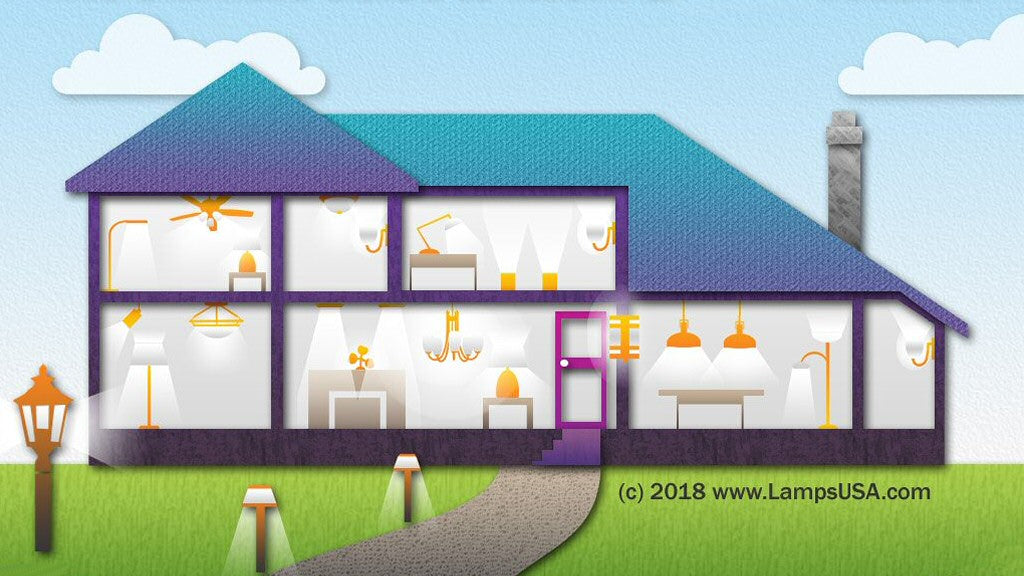
Light Fixtures: The Ultimate Guide to Room Lighting Fixtures
Search
Light Fixtures bring Beautiful Lighting to Every Room of your Home or Business
In this light fixtures infographic guide we'll help you to understand lighting fixtures and how to choose lighting for your home or business. This visual lighting guide will take you on a tour of the light fixtures available, which ones to select for each room and how to combine them together.
You'll learn also how to layer your lighting, use of electrical circuits and switches, how to improve your room's visibility without introducing eyestrain or glare, and interior design ideas for creating a room theme or mood with your lighting.
A helpful discussion of each topic will follow after the infographic. Read on to learn about light fixtures!

Ambient Lighting, Task Lighting and Accent Lighting
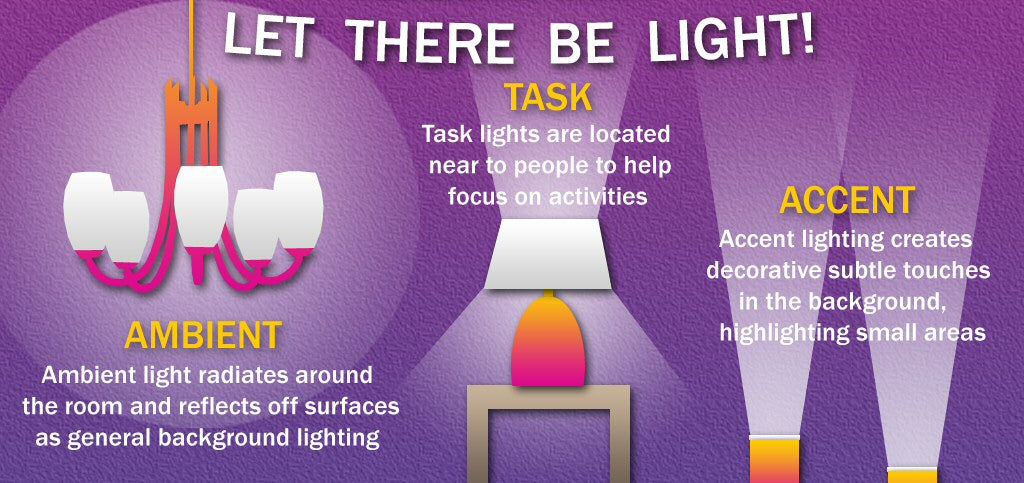
Light fixtures provide lighting in different ways and for different purposes. Lighting design is usually divided into three main groups of light, as follows.
Ambient Lighting
Ambient lighting is the overall "background" light which is radiating throughout the room. Ambient light also comes into the room through sunlight and doorways and fills the room.
As light reflects off walls and surfaces, or passes through materials, it spreads out (diffuses) in all directions and loses its focus. This softens the light and makes it more even, raising the overall level of ambiance in the room.
Light fixtures, particularly ceiling lights and wall lights, add to the overall ambient light in the room. Each light bulb produces the most intense light near to the bulb itself, but as light moves further away the light spreads out more and becomes more ambient.
Task Lighting
Task lighting deliberately attempts to focus a hot-spot of light on a local area. This is usually achieved with a portable lamp or light fixtures which aim light in a specific direction.
When you are sitting in a chair or at a table, you'll want the light to be shining near to you so that you can perform tasks and activities. Task lights or task lamps help to position the light closer t where you will be in the room.
Task lights make use of a stronger but shorter-range light for practical purposes. Particularly popular for this purpose are table lamps, floor lamps and pendant lights.
Accent Lighting
Accent lighting is a hybrid of ambient and task lights. They aim to remain in the background, rather than being used to support a practical purpose. At the same time, they focus light in a small area for decorative purposes.
Accent lights might shine light onto a wall, sit on a mantle-piece, or provide a small night light in the room. They tend to be lower wattage or intensity than other types of lighting.
Combine different types of lighting
It's best not to fill a room solely with ambient light fixtures. For example lighting from the ceiling will tend to cast shadows downwards. The sides of objects will be more likely in shadow.
Complement ceiling light fixtures with wall lighting fixtures or lamps whose light radiates in a more sideways direction toward the middle of the room. This will help to light people and objects in the room more favorably.
This is why we recommend using at least 2 types of light fixtures in a room - for example a chandelier and some wall lights, or a pendant light fixture and some lamps.
The Color of Light in a Room
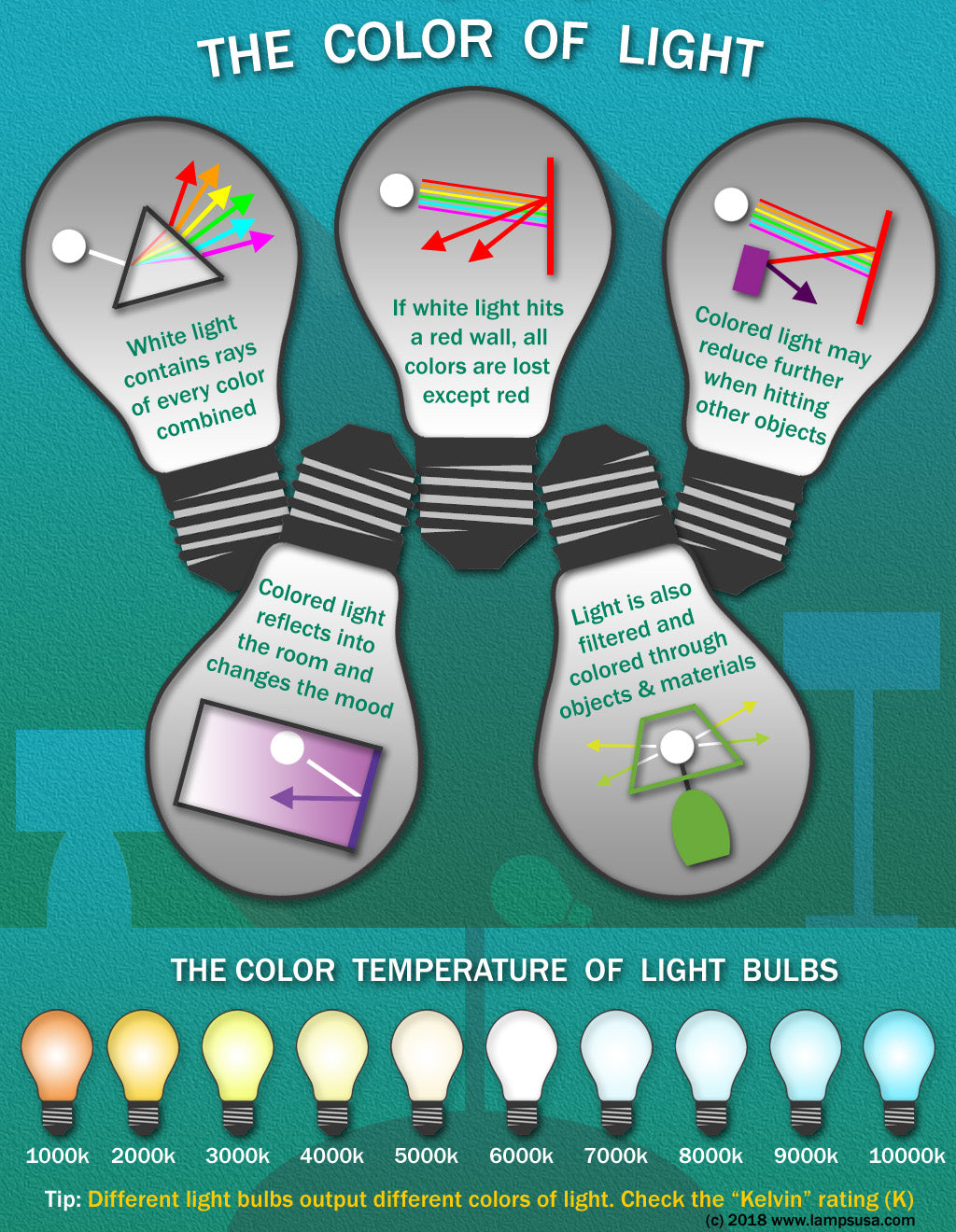
Light fixtures output light using light bulbs or LED lights
You can easily assume light is "white" and that everything in the room will be fully lit and show its colors accurately.
White light itself actually contains all of the colors of the spectrum together. So you can imagine many differently colored rays of light all overlapping. When these light rays hit a wall or object, some of the light is absorbed depending on the "color" of the surface.
Light changes when it hits colored objects
Let's say you start out with a white light. The light contains rays of every color. When the light hits a red wall, the wall looks red because "only red light" is bouncing off and entering your eye. But what happened to the other ray colors? They were actually absorbed by the wall.
This means that as light hits a surface, unless the surface is pure white which reflects all colors evenly, it will absorb most of the colored rays and reflect only a few of them. Light then becomes dimmer, contains less colors overall, and diminishes the light in the room.
Brighter walls and objects reflect more light
So if you have lighter-colored walls, it will make your room lighter not just because your walls look like a lighter color, but because they actually reflect more light into the room and absorb less. This means there is more ambient light able to bounce off and reach other objects in the room, making them appear brighter.
Lighter-colored walls and furniture definitely will increase the overall level of light in the room, without having to change any lighting fixtures or add more light fixtures. But when you have your heart set on a certain color scheme, the best way to increase the light is to add more light to the room by installing additional lighting.
Use reflected lighting to your advantage
You can deliberately choose the color of your walls or furniture to influence the "color mood" of your room. When light reflects off these items, some light will be absorbed, but light will then become "tinted" and this colored light will radiate into the room as ambient light.
Lighting can dramatically influence the overall ambient color of the room and help to set the mood. You can use light fixtures to help with this also. When light passes through a shade or diffuser as part of a lighting fixture, it will also be partly absorbed and tinted according to the color of the light fixture.
For example warm-colored lamp shades will add extra warmth to the room as a warmer ambient light. To filter the light the least, opt for white or near-to-white shades on lamps and fixtures.
The color temperature of light bulbs
Lighting isn't all equal and a lot depends on the light bulbs themselves. Light bulbs generally do not produce pure white light. They usually lean towards yellow or almost-white.
This has an influence on the overall color of the room. If you are shining incandescent "yellowish" light bulbs into the room, your walls and furniture and also people will be tinted yellow as well, due to the lack of light rays from other colors in the spectrum. This can make the colors of furniture etc look unnatural or poorly lit.
Find out the Kelvin or color temperature of your bulbs
The coloration of the light coming out of the light bulb is rated based on a "Kelvin" scale (K). This measures the hue of light from the bulb ranging from orange-yellow through white and on toward blue.
Full spectrum light bulbs can be used in the home or office, which simulates natural sunlight and produces a bright, near-white and fairly even balance of all colors. These are usually somewhere around the 6000k to 7000k range on the Kelvin spectrum and not only help to show objects in their most true-to-life color, but also reduce eyestrain and fatigue.
Hard-Wired Light Fixtures and Portable Lamps

Hard-wired light fixtures
Most light fixtures are designed to be wired directly into the electrical system of your room. Usually you will have electrical cables installed in your walls, ceiling and/or floor. Instead of providing a user-friendly electrical outlet on the end, they will expose the raw wires which must be carefully joined to the wiring of light fixtures by an electrical or someone well-versed on electrical safety.
These kind of light fixtures are called "hard-wired" because they are wired straight into the electrical circuit. This means they also must be mounted directly to where the electrical cables emit into the room, otherwise the hidden wiring will have to be modified in order to move the light fixtures to another location.
Typically your room will have an outlet for wiring in the center of the ceiling for an overhead light fixture, and possibly on the walls. If these aren't sufficient or the placement isn't ideal, you'll need to have additional wiring installed by an electrician.
Hard-wired lighting fixtures include substantial lighting such as a chandelier or pendant or a set of wall lights, all the way through to recessed can lights which are installed within the ceiling. These light fixtures are usually installed onto the ceiling, onto a wall, or into the floor.
Portable lighting fixtures
Portable lamps and lights can increase your lighting options by use of an additional external cord. This cords plugs into a standard electrical outlet and lets you extend the lights into the room.
These lights usually take the form of floor lamps, table lamps, desk lamps, up-lights, accent lights or other types of plug-in lighting such as swag pendants.
The benefit of portable lamps is that you can move them to another location or room, to rearrange the lighting in the room. They can also be switched on and off independently or in addition to the main electrical lighting.
These types of light fixtures also do not require an electrician to install. If you are having trouble finding or paying for installation you will be well served to focus on portable lamps, or plug-in pendant lights and wall lights which can connect to a standard electrical socket.
Decorative light fixtures
In order to position light fixture into the room, when you use a hard-wired light fixture it must use additional materials to move the light bulb(s) into the room. If you don't do this, the light source will have to remain close to the surface where the electrical supply is, such as close to the ceiling.
This may not be appropriate if you want to position light further down into the room over a table or chair. Light grows dimmer the further it moves away from the light source, so light close to the ceiling will be dimmer when it reaches the floor.
Decorative lighting fixtures reach out into the room through chains, cords, arms, poles and various other functional means. The result of this is that the materials become exposed, and must not be considered part of the room's decorative theme.
This is why light fixtures such as chandeliers and lamps have become highly decorative and stylized to not only match a theme but to establish style in the room.
Generally speaking, light fixtures which move further into the room are more decorative, and also through use of extra materials and design tend to have a higher price tag. They contribute more to the overall look of the room and are not purely functional, for they now have become part of the decor itself.
Lighting to Improve Human Eyesight

Rooms are for people, lighting is for your eyes
Remember that the purpose of a room is to serve the needs of humans. Humans tend to move around from one location to another. Sometimes they spend time in one location performing an activity or relaxing. And they also enjoy an attractive room that's pleasant to be in.
Home lighting should reflect the behavior of humans and cater to their needs and interests. This means you should provide at lest two types of lighting:
- Ambient lighting fills the room and spreads throughout the room, producing an overall level of general lighting. The purpose of this light is so that when people get up and move around the room suddenly, there is already light present where they arrive. Ambient lighting is important to provide this convenience and to make sure all parts of the room can be safely navigated.
- Task lighting caters to the human tendency to remain in one place for a while. And while they are in one place, they might be performing favorite activities such as browsing a mobile device, reading a book or engaging in crafts and hobbies. Providing a nearby task light helps to see what they're doing and to focus on the task with more accuracy and ease.
Consider each room's lighting individually
A hallway does not serve the same purpose as the living room. Similarly the kitchen is quite a different functional space than a bedroom.
For optimal room lighting, consider a) how much people will be moving around the room, b) how much time will be spent in specific locations, and c) whether the person will be stopping off to enjoy the scenery.
Particularly think about whether the room has a major function to perform, such as an office or workspace, or in the kitchen, where you need to ensure enough light and the right kind of home lighting is used.
Position task lamps near to important, highly-used areas. Back them up with overhead or other ambient light fixtures. And then decorate with accent lamps where appropriate.
Improve your vision
The main purpose of light fixtures is to provide light for your eyes.
The most important factor to keep in mind is that your light fixtures are supposed to help your vision. They are there to provide light so that you can see.
But at the same time, be careful that you are not shining bright lights directly into the eyes. Indirect/bounced light is usually more diffused and softer to look at.
With your room lights in mind, be careful not to position lights at or above eye level if the light bulb is exposed. Remember to check the difference between standing and sitting in terms of what you can see from important seating areas and in various directions.
For example a floor lamp is well-designed to hide the bulb when you are standing next to it, but when you are sitting below it you might well see the exposed bulb glaring into your eyes. Often such lights will include a shade or diffuser to help protect your eyes.
Lighting can glare when reflected off surfaces
Watch out for glare. Direct light shining into your eyes is one problem, but so too is light shining directly into your eyes after bouncing off another surface. Particularly if the surface is white or reflective.
This includes being seated reading a book. Task lamps should be positioned behind you or to the sides so that the light rays mostly bounce off the pages and away from you. Enough diffused light will still be present to light the page and reach your eyes for comfortable reading. If the bounced light were to aim mainly into your field of vision it will make the page more glaring and harder to read due to specular reflections.
Make use of lamp shades
A table lamp can easily be positioned next to a seating area alongside a couch or next to where you will be spending most of your time. It's okay that the lamp is near to your vision because it will feature a lamp shade designed to block most of the light and reflect it downwards.
Also pay attention to the shape of lampshades because this has a significant influence on whether the light shines out of the lamp in a cone to the sides or straight up and down.
A flared or empire shade will spread more light outward below the lamp (which applies to floor lamps also) and makes them ideal for reading or positioned at the bedside or on a nightstand.
Lighting for older eyes
For older folks eyesight becomes diminished and while the same amount of light may be reaching the eyes, the eyesight itself can reduce its sensitivity to light.
To help cater to this, you'll need to increase the overall level of light (lumens or foot candles) in the room, by up to 50% extra. Particularly ensure there is a bright task lamp near to seating and eating areas and extra light in the kitchen or around areas of activity.
A full-spectrum lamp is helpful for the elderly also as it reduces eyestrain, increases contrast and makes it easier to read and perform tasks. Being more natural and more filled with lights rays of all colors, it helps to show up objects in the room better and thus raises the overall ambient light more efficiently.
Overlap Layers of Lighting to Reduce Shadows
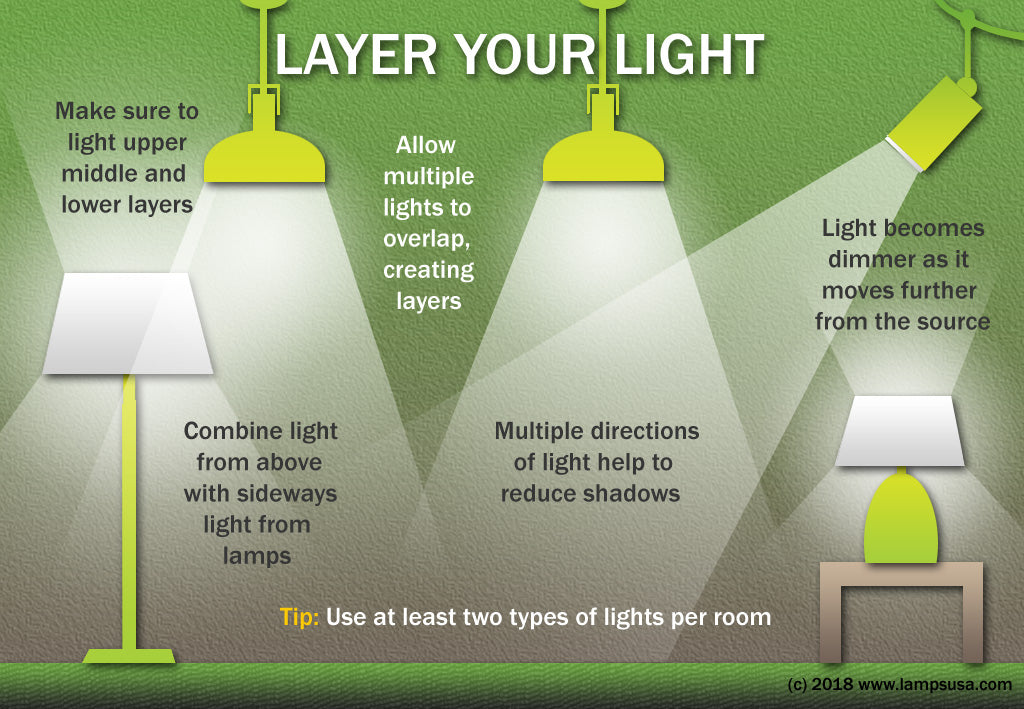
Choose light fixtures of different types
It's important not to just have one light source in a room because it will cast shadows in one direction and create dark areas in the room. Combine at least two types of light fixture, such as a ceiling light and a lamp or wall light.
Consider choosing lighting fixtures which shine line from different directions and angles. Also look at the shape of the shade on the fixture to see what direction it will aim the light and how much it will spread the light out.
Light the room in upper, middle and lower layers or the room
Divide your room into upper, middle and lower levels and consider how useful each of those levels is to you. Most rooms will need light at least in the middle layer.
Rooms such as hallways, landings and stairs, foyers or entry ways may focus more on "standing" and need adequate light in the upper and lower portions as well.
Also pay attention to your kitchen lighting, because here you may perform many tasks while standing - you'll need adequate light in the middle and upper regions of the kitchen for safety and utility.
Some small rooms such as a lavatory you can get away with possibly only one light fixture since it will flood the room with light, due to the closeness of the walls.
Reduce shadows with directional lighting
Shadows are produced when light in one area is stronger than in another. When you add a light fixture, it will emit light from one location and areas close to that location will be lit more directly. But when light strikes furniture it will cast shadows onto areas further away from the light source and onto walls.
To "back light" objects and fill in the sides, consider more than one light fixture in the room particularly by adding multiple light bulbs in one way or another. Filling in darker areas of the room with additional small light fixtures or portable lamps will also help to reduce overall shadows.
You can also make use of accent lights to fill in dark areas, up-lights to shine light behind furniture, and extra lamps in areas that are more important.
Let your lighting overlap
Rather than trying to only fill a certain area with light - which should be the aim of task lights, aim to let the majority of your light overlap. This means light from one light fixture should light part of the same area lit by another lighting fixture.
The only exception to this might be if you are trying to create intimacy, in which you will move away from ambient light and lighter walls and more towards isolated hot-spots of lighting near to where people will sit or spend time.
Indoor light fixtures and home lighting fixtures provide a wealth of options for different types of light output, different functions and different coverage of light. There are so many options available that you can achieve effective room lighting in several different ways.
The Lamp Shade on your Light Fixture aims the Light

Lamp shades and light fixture shades
The purpose of a shade is to in part, shield your eyes from harsh glare. But another practical function in light fixtures is to focus or narrow the directions in which the light emits.
Light will leave most light bulbs in all directions, except for some specialized or reflector-type bulbs which shine most of their light out in "half" a circle. This isn't always ideal because it's means you can't direct the most light to where you need it, and some light is then wasted.
The purpose of the lamp shade
A lampshade over a lamp or on a light fixture serves two purposes. It blocks light from being emitted in certain directions, while simultaneously reflecting and aiming light to exit the light fixture in a specific direction.
The shape of the shade is of great importance because it has a huge influence over the "cone" or shape of the beam of light which will emit out of the end of the light fixture.
A wide-bottomed or "flared" shade will spread light outwards to the sides much more than a narrow-bottomed shade. The wider the shade is and the closer the light bulb is to the opening, the more it will spread light outward and below.
Different shade shapes have different uses
Some light fixtures are therefore designed to deliberately be used over a table, kitchen island or seating area for example, by featuring a narrower shade which aims more light downwards and less to the sides.
When light is positioned next to or nearby seating areas the shade should tend to be more flared outward to emit light to the sides as well as below.
A very narrow beam of light can be produced from a narrow cylinder shade, such as with a spot light, recessed lights or some shapes of lamps. This can be useful in very specifically aiming the light in a direction to highlight artwork on a wall, to shine onto an important object, or to create a bright spot in the room.
The material of the light shade is also important
If the shade itself is made from a very solid material, it will reflect all of the light out of the opening in the end of the shade. This for example is the case with spot lights.
Translucent and fabric shades
If the shade is partly transparent (translucent) and possibly tinted with a color, or is made of a fabric material, some of the light will pass through the shade and some will reflect out through the top and/or bottom of the shade. This will cause the shade itself to glow and be illuminated from within, which can provide extra decorative effect.
Colored shades
Some shades such as with tiffany lighting, made of colored glass pieces, are designed to come to life when the light is switched on. Light shines through the shade and creates a beautiful light show, while still directing most of the light downward.
Transparent or clear shades
Sometimes also a light fixture or lamp may feature a transparent shade, usually glass, such as with outdoor light fixtures. Outdoor lighting needs to send as much light as possible into the surrounding area to provide ample light at night and for safety, so will tend not to use a colored or opaque shade. That said, dark-sky outdoor lights are intentionally designed to reflect most light downwards to alleviate light pollution.
A clear shade may also be designed to protect the bulb or to show off a vintage-style light bulb for decorative purposes.
So be mindful of the shape and design of the shade and what kind of light it will output and in what direction, when you are choosing your home lighting.
How to Create an Atmosphere or Mood with Lighting Fixtures

You can use light fixtures to create different moods in a room
Remember not all rooms are alike and depending on your personal preferences you might prefer your room to feel comfortable and relaxed such as with a living room, formal in a dining room, and intimate in a bedroom. This can be achieved with careful selection and arrangement of light fixtures.
Below are some interior design tips to help you create an specific atmosphere in your room using lighting fixtures and lamps.
Lighting a relaxed room such in a living room
To create a relaxed room theme, aim for mostly ambient lighting. This means choosing mainly ceiling lights and wall lights. You'll want to produce an overall even light throughout the room with low levels of contrast. This means avoiding shadows and trying not to create areas that are significantly brighter than others.
Also try to avoid too much symmetry. That means, try not to balance the placement of lights in the room too much or make "patterns" with your light placement. Doing so makes the room more formal. Instead, break it up with fairly random placement of different types of light. In particularly shoot for at least 2 or 3 different types of lighting in the room.
Here it is okay to combine lighting styles to some extent to communicate that you are more "relaxed" in your attitude and this attitude will extend through to the kind of lighting impression you create. Remember to layer the light and try to avoid task lamps where possible (one or two table lamps is enough).
Lighting a formal room such as a dining room
To create a more formal atmosphere with your light fixtures, by all means choose more elegant, well-designed and "classy" light fixtures. But also try to establish balance and symmetry. That means positioning lights in an orderly fashion and evenly spaced.
Opt for a significant central light fixture such as a dining room chandelier which will add elegance and decoration to the room. Then establish a logical hierarchy in the room's lighting by stepping down the lighting, first to any additional light fixtures and then to lamps if needed.
Make sure you choose one coordinating style for all of the light fixtures and lamps, to create a more cohesive and professional look. Many lighting collections will provide many types of light fixtures all designed with the same thematic "look", often referred to as a family, making it easier for you to choose several pieces which all coordinate in the same style. This will add to the rooms formality.
Lighting a dynamic room such as a media room
Energize your day by stimulating the senses with dynamic lighting. This means increasing the contrast in the room between areas of light and areas of dark. Position lights asymmetrically and try not to be too even in the lighting so that some areas are obviously brighter than others.
It's okay here to have a bright hotspot of light while other areas are relatively dark, so as to add drama and tension in the room. Maybe you can throw in some theatrical spot lights to bring movie-night to life. Or use some cool lamps with unusual shapes to help energize the room.
Using light in an unexpected way can also grab your attention and make you take notice. This can further enliven the room. For example arranging lamps in an unusual way, using a cluster of smaller lights together, or positioning the lights in an interesting arrangement. You can also use different types or styles of lighting, just be careful not to choose something too clashing.
Lighting an intimate room such as a bedroom
Some rooms are meant to be soft, inviting and personal. The bedroom is one such example. Consider also that by careful selection of light fixtures and switches, you could create a living room which at times has one mood, then at the flip of a switch it moves into a more intimate mode where the ambient lights are turned down and the lamps come on.
Use lamps in particular to create localized glowing areas in the room, such as next to the bed on a nightstand or in a corner. It's useful then to position these lamps near to where people will spend time, and bedside lamps are a particularly popular choice.
Keeping your walls darker will help to remove widespread over-stimulation and bring the focus in to the highlighted areas that are more intimate. The focus should be taken away from the walls and the larger scope of the room, and used to draw attention to smaller areas. It's also useful to position light so that it shines "lower" in the room, such as from a downward pendant, so that the ceiling is less illuminated.
Lighting a festive room such as a dining room
Your dining room doesn't have to be all about formality. It could also be a party room. The room can be given a whole different look and feel by selecting more decorative light fixtures. Particularly focusing in crystal, glass and reflective elements you'll add more sparkle and pizzazz to the room.
Shine a bright light onto a small area in order to make it extra dazzling. Over a table this can serve practical purposes. Choose also some fun accent lights which lift the mood and make the room more playful.
If your dinner parties are less about formality and more about having a fun time, then the festive room style might suit you.
Lighting a creative room such as a home office
Remember that lighting doesn't have to follow the rules. It's great to be creative and to express your personal style and preferences. To create a room which in-turn inspires creativity, perhaps for home office lighting, let your creativity be emphasized by unusual, bold and colorful lighting.
Look for interesting shapes and particularly avoid straight lines - curves tend to feel more creative and expressive. Look at the profile of the light fixture or lamp and opt for colorful, well-shaped units that scream design, creativity and something unique.
A creative room style will lend itself more to a modern theme overall, which fits well with a technological home office, and work doesn't have to be all work and no fun. Be inspired by your lighting and surround yourself with creativity every day.
Establishing a Room Theme
There are several elements to consider when either matching your lighting to your existing room theme or when establishing a new theme. If your light fixtures are larger or more decorative they will contribute more to the overall theme of the room than smaller or more discreet fixtures.
Lighting Color
Look at the dominant colors in your room and any accent colors you've used. If you are keeping the rest of your room as-is you'll want to match your light fixtures and lamps to it.
The two main parts of light fixtures conveying color are the body of the item, and any shades which cover the light bulbs. You could opt for a fairly neutral lamp body but a strongly colored shade, or you could emphasize the main background colors in your room through the body of a light fixture and allow the shades to take a step back.
Lights can also introduce a pop of color into the room, particularly through colored shades and lamps. This can enliven the room or accompany other items in the room of a similar color. When your room uses less overall colors it will appear more cohesive and less of a jumble of randomness. Too many colors is the same thing as no color scheme at all.
Lighting Style
The style of your room may or may not be clearly established, or may be mostly one style with some clashing styles thrown in. If you are to mach your lighting to your room you'll need a sense of the main style or what kind of look you prefer.
Modern Lighting
In the broadest terms, the two main styles are modern and traditional. Modern styles tend to use clean lines, bold well-defined shapes, an absence of fine details, modern-looking materials and tend to be more "minimalist".
Traditional Lighting
Traditional styles tend to be much more ornate, finely detailed, classic-looking, colored with the kinds of finishes available years ago such as bronze and brass.
Silver tends to come across as a modern finish, as do solid blocks of color including black and white.
Lighting styles
Is your room more masculine or feminine? Hard angular edges or flowing curves? More neutral or brightly energetic? Perhaps modern but casual? Futuristic, or very old-fashioned and well-established? Once you have a sense of the theme you're going for, you'll be able to find light fixtures which match that theme and fit into the room, adding to the room's overall style and looking like it belongs.
Lighting shapes
The shape or profile of lighting has a lot to do with establishing its thematic style. It gives the light fixture its personality or the "feel" of it. Classically shaped fixtures will come across as more traditional, while modern fixtures often explore unusual shapes and forms in order to convey a more up-to-date look.
Whether your lighting fixtures have straight lines or curved edges can make a big difference in determining how formal or relaxed they appear to me, or how masculine or feminine.
Lighting materials
Light fixtures are made from various materials. Often the underlying material is not the same as the material used to "finish" the surface. The fixture itself might be made of metal, resin, or other substances, and then covered in a protective and decorative coating. This is often referred to as the "finish" of the fixture.
Light fixtures in particular, featuring large areas of framework or body, plus some shades, tend to finish the main body of the item decoratively. For example bronze, brass and silver or chrome are popular choices. There are many others and each manufacturer has their own names for their own finishes. What one calls an "oil rubbed bronze" another may call a very similar finish "dark coffee". So use your vision to determine how it actually looks to your eyes.
Remember also that wood is a popular material and you can acquire light fixtures and lamps made from wood or featuring wood elements. This is useful for a more natural-themed or rustic style room or one relying heavily on wooden furniture. Such items tend to be solid room rather than finished with wood. Similarly look for whether the product is made of "solid" substance or just finished in it, such as "solid brass".
Lighting personality
What's your personality, and do you want your lighting to reflect your personality? There's nothing wrong with that. Most people want to create a room space that they love and enjoy and feel is a reflection of themselves or which offers them a look-and-feel they can appreciate. There's nothing worse than choosing light fixtures that you did to try to meet some goal while sacrificing getting something you actually feel in harmony with.
Be aware that due to costs of design and materials, and also various higher charged placed on popular brands and larger light fixtures, that cheap or inexpensive light fixtures will tend to have less character or personality. They will lean more towards looking basic and less-well designed, and may help to make your whole room seem lower quality.
You can certainly save money through careful selection of good-looking yet inexpensive fixtures, but beware of "builder-quality" lighting poorly designed products. An alternative way to save money on lighting is to steer aware from large light fixtures and pull back on the decorative qualities, perhaps opting for some flush, semi-flush or recessed lights instead of hanging lights for example. Ultimately it's all about how much light is output and the quality of the light.
Lighting collections
Lighting manufacturers design numerous types of light fixtures all with the same look and feel. This forms a "collection" or family, where for example you'll find a chandelier, a wall light, a pendant, a semi-flush and perhaps a lamp, all matching in style, color, finish and theme.
This means that if you stay within the collection, and choose pieces that are complementary in their styling, it will help your room to be more cohesive and well designed. It also makes your life easier because now you only need to hunt down a collection whose overall theme or "look" you like, and then you can narrow down to particular types of light fixtures within that collection.
Shopping for lighting collections can be not only more efficient but you'll also end up with a more coordinated look, unless of course you are shooting for a less formal room style where mixing and matching styles is welcomed.
Popular lighting and room styles
Some popular interior design styles right now include modern/contemporary, traditional/classic, vintage, mid-century modern, country, farmhouse, rustic, coastal, casual, restoration and Asian.
There are many styles out there which you can research further online. You should be able to find light fixtures and lamps to help you build a particular style for your room.
Activate your Lighting with Wiring and Switches
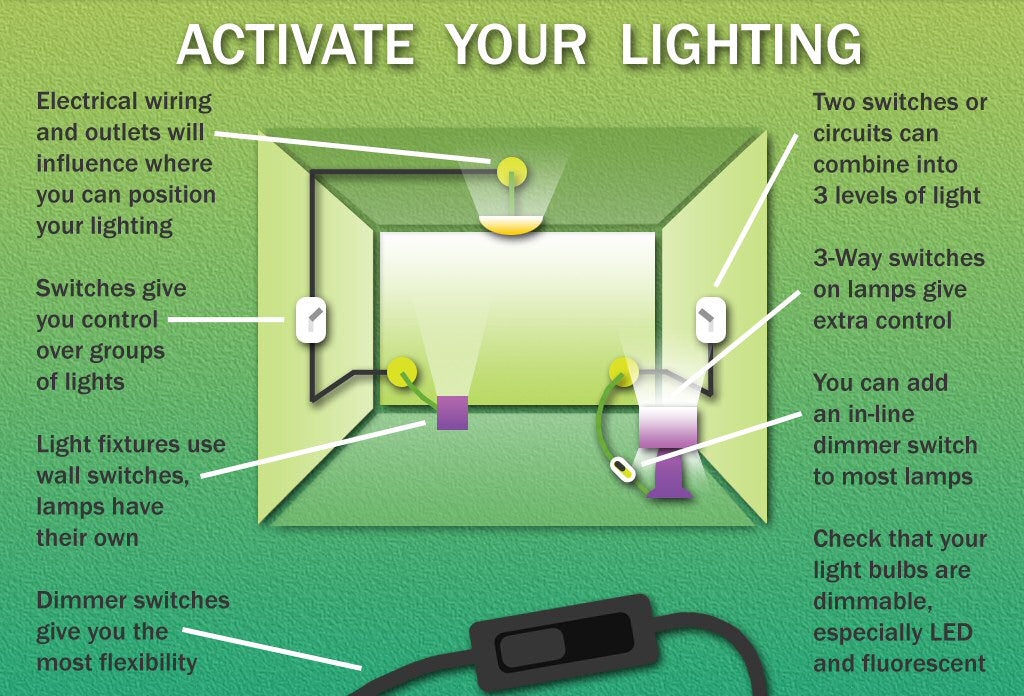
Light fixtures rely on electricity
Lighting fixtures and lamps typically run on electrical current from wiring or an outlet. This sometimes restricts you to where you can position your lights.
If your lighting is hardwired, you'll be connecting your lights directly to the electrical mains at the point where it comes out of the wall or ceiling. This means either you'll need an electrician to reconfigure your wiring so that you have electrical access in another location, or you'll have to work with your current wiring.
Plug-in lighting can be re-positioned
In the case of lamps and plug-in light fixtures, your life is a little more flexible in that once you plug them in you'll be able to position them in various locations due to having their own cord - and of course you can use extension cords and dimmer switches to increase the range.
Switches give you control
Electrical current is switched on or off using some kind of switch, unless it is wired to be on permanently. Typically this will entail a wall switch. Sometimes you may have a switch on an electrical outlet (or extension cord), and also all lamps typically have their own switch on the cord or on the lamp itself.
Depending on which wiring the switch is connected to, switching it on will activate certain light fixtures on that "circuit". If the room has more than one circuit, and thus more than one switch, you will be able to switch some fixtures on regardless of whether the others are switched on.
Multiple switches let you adjust lighting levels
When your room has at least 2 switches or circuits, or it has one circuit but you are making use of an additional switch somewhere e.g. on a lamp, the combination of the two switches gives you three possible levels of lighting:
- Only switch A is switched on, activating one set of light fixtures
- Only switch B is switched on, activating a second set of light fixtures
- Both switches are one at once, activating both sets of light fixtures
This means that you can obtain 3 levels of brightness in the room. For example, "lamps only", versus "fixtures only", versus "lamps and fixtures". Keep this flexibility in mind because you may not always want or need maximum light output at all times, depending on the weather or time of day. And when it becomes extra dark you may want to reach for that second switch to brighten the room.
Types of light switches
A regular light switch usually has one state for "on" and one state for "off". An on/off switch is great for most light fixtures. But sometimes you'll want more control.
Some lamps are supplied with a 3-Way switch, which means the switch can be off, it can switch on one circuit, or it can switch on a second circuit as well. If for example a 3-Way floor lamp has 3 light bulbs, a 3-way or even 4-way switch may switch on one bulb, two bulbs, or three bulbs to adjust the brightness level.
Dimmer switches give ultimate control over your lighting
For the maximum degree of adjustment, you can either install a dimmer switch on the wall for light fixtures, or add a dimmer switch to a lamp. These usually entail a short cord with a slide switch or knob on it. This allows you to adjust the flow of electricity so that the brightness of the bulb adjusts.
You can use a dimmer switch to make a lamp very dim or very bright or anywhere in between. The only thing to keep in mind is what kind of light bulbs you are using with it.
In your home lighting design consider that to dim a bulb, incandescent bulbs work effortlessly. Fluorescent bulbs and LED bulbs however require the bulb and hardware to be designed to support dimmability. Many fluorescent and LED bulbs may not be dimmable so check the specifications.
You will likely need a special kind of dimmer switch for a wall if you are operating LED bulbs in your light fixtures as a regular dimmer may not provide a smooth enough transition or stability.
Indoor Light Fixtures - Types of Lighting Fixtures and their Benefits

Chandelier Lights
A chandelier is a large light fixture which hands from the ceiling, usually from a chain. It features either multiple arms extending out from a central body or some other substantial design. Being so large the chandelier will add greatly to the room's theme and they are highly decorative.
Chandeliers are great if you have a higher ceiling, since you will need some space below. If people are to walk beneath, a chandelier can work well in a great room or lounge with a high ceiling, or perhaps in a foyer.
A chandelier also works well over a dining room table or in a kitchen. You can also use a chandelier in a bedroom provided either you have higher ceilings or it's located where people aren't going to walk into it.
A chandelier will produce a large amount of ambient light typically in many directions since it features multiple light bulbs. Remember that since it hangs from a chain you do have some freedom to determine the height at which it is positioned.
Pendant Lights
A pendant light is similar to a chandelier, usually smaller, and featuring typically only one shade. It will hang from the ceiling via a chain or cord. The direction and opacity of the shade is important in determining whether it will shine light upward or downward.
Pendants are available in many sizes and styles. They include kitchen island pendants and also mini pendants, which provide small splashes of artistic color and can be used in a group over an island, bar or kitchen surface.
Since pendants hang from the ceiling you'll need ample room below, but they work great over either a table or a seating area where people won't be standing directly below. Remember to beware of glaring light from the light bulbs if you are going to be in view of them.
Pendant lights are often limited to around 3 or so light bulbs, so using more than one in a room is a great way to add some balance and establish a theme.
Flush Ceiling Lights
Flush ceiling lighting is often quite simple and plain in its design. You'll find them in apartments and various smaller rooms. They are considered "dome lights" and can feature up to 3 light bulbs.
A dome light works well in a smaller room where you don't have additional head-room and you want a reasonably bright overhead light. This can work well in a restroom or hallway, or perhaps in the bedroom or kitchen. To provide ample light in a larger room you'll need to use more than one, and probably in combination with some lamps.
Dome lights tend to be less decorative because they only have a small rim and bowl shade to work with. For a more decorative alternative, look at the close-to-ceiling or semi-flush light fixtures which feature additional body materials and are more decorative in their design.
Close-to-Ceiling Semi-Flush Lights
Similar to a dome light but broader in its appeal, a close-to-ceiling light or semi-flush mounted lighting fixture suspends from the ceiling but not very far. If your ceiling is of reasonable height that you can walk below, a semi-flush light can be a great choice to add main light fixtures to a living room or in a hallway.
They are referred to as semi-flush because the top part mounts flush to the ceiling but there is usually a gap between the ceiling and the shade. This means some light can shine upwards as well as below, producing more ambient reflected light.
Recessed Pot/Can Lights
Recessed lighting is relatively inexpensive but it does require to be installed "inside of" some kind of surface, usually a ceiling. This means a circular hole will need to be made in the ceiling to place the light inside of it.
These lights, sometimes known as can lights or pot lights, then shine a single bright light bulb downwards in a cone shape. You will likely need to use several in a room. A popular choice is to position them near to the edges of a room if you have a recessed ceiling, or evenly spaced across the ceiling as your main lighting.
Since all of the light fixture is installed inside the ceiling with hardly anything showing beyond the ceiling level, they are not decorative lights. They come across therefore as modern style, and are less suited to a traditional room theme.
A final option here is an under-cabinet light typical of a kitchen, where a small strip of lights (often LED) are mounted below cabinets or within shelving to produce light in a fairly limited area. This can shine onto a work surface or act as accent lighting in a room.
Wall Lights
Wall lighting is mounted onto a wall. Occasionally wall lights may have their own switch but usually are wired into the main circuit. For a larger wall, mount 2 or 3 lights on the same wall.
It's beneficial to place these lights behind a couch in a living room so that they can provide overhead and rear lighting while seated. They are also a popular choice in a hallway, stairs or landing since they can be quite flush to the wall making it easy to walk past without disturbing them.
When your room has a strong presence of light in the center or to one side, you may find that the other side of the room may be less-well lit, or your walls might look too bare. You can break up the monotony and bring wall light to that side of the room by adding wall lights to complement the main light fixture.
Ceiling Fans with Lights
A ceiling fan provides multiple benefits. It can help to keeps your rooms cool in summer and help to circular heat in winter. Many fans also come equipped with, or can be adapted to, a "ceiling fan light kit".
The fan may feature upward-facing lights and/or downward facing lights. It therefore becomes an option as a central light fixture or over a seating area. The lights can be operated separately from the fan rotating. The lights might also be dimmable or operable from a remote control.
When you use a ceiling fan as your main light fixture, you may want to pair it with some lamps to help balance out the light in the room.
Spot Lights
A spot light is an adjustable can light which can be aimed and pivoted to point in a certain direction. This focuses a fairly narrow beam of light in a specific direction. They can be mounted to the ceiling or to a wall.
Sometimes you will also find them a part of a track-lighting system, whereby multiple light units are mounted onto a track, allowing them to be moved along the track to re-position them. Track lights may also feature other types of lights such as mini pendants which hang down, or small directional lights which are almost nothing more than a reflector-style light bulb.
Spot lights are a great way to highlight an area of a wall such as to draw attention to artwork or create shadows. They can also be used to aim toward a seating area, or even can be mounted to the wall and aimed upward toward the ceiling. It's advisable to use at least a few spot lights in combination rather than just one.
Up-Lights
Up-lights or can-lights are small cylindrical lights which sit on a floor or furniture surface. They shine light specifically upwards only and produce a fairly narrow funnel of light.
When positioned near to a wall, the light will strike the wall, highlighting wall texture, and this can help to decorate the wall and make empty spaces more interesting. They could for example be placed either side of a fireplace or behind some furniture in a darker corner. The up-lighting fixture itself will then be out of sight.
Up-lights are usually plugged into a standard electrical outlet so can be moved around as needed, meaning you may want to hide the cord behind some furniture.
Indoor Lamps
Floor Lamps
A floor lamp is a tall standing lamp which sits on the floor. A long pole elevates the light source above ground to a higher level in the room. This is an alternative way to create semi-overhead lighting without a ceiling light fixture.
If the floor lamp is placed behind or to the side of a chair, it can provide ample downward light since much of the light will also radiate out to the sides, depending on the shape or style of the shade.
Floor lamps will also typically shine some or all of their light upwards which reflects off the ceiling and produces diffused ambient light. They also are usually rated at a higher wattage or have more light bulbs than other types of lamps, so can be a good way to raise the overall level of light in a room.
Beware that when you are sitting below a floor lamp with a shade, if the lamp is nearby its interior may be exposed to your vision and if you can see the light bulb it will be glaring. In this case, make sure to position the lamps to the sides or behind you, or move them further away from seating areas toward a corner of the room.
Torchiere Floor Lamps
A torchiere or torch lamp is a special kind of floor lamps which resembles "a torch" and shines most of its light upwards. These tall floor lamps usually feature an upward-facing shade which reflects most light toward the ceiling where it bounces off as ambient light. Some light may also pass through the shade depending on how solid it is.
These torchiere lamps in particular can be a good way to produce ambient light in a room, since they often will feature bright or multiple light bulbs and aim much of the light up away from direct vision. Their shade protects your eyes while still producing strong light.
A torch lamp will also sometimes feature a reading arm, which extends out from the side of the pole lamp and shine a small light downwards. This is to partly compensate for the fact that most of the main light shines upwards. This provides a focused downward light when positioned over or near a seating area, helping you to read or perform tasks.
Reading Lamps
More specifically designed to help with reading or other seated tasks, reading floor lamps aim all of their light downwards. Often on the end of an adjustable or flexible gooseneck arm, the lamp head will shine bright light down from over your shoulder.
Position a reading lamp to the side or behind a chair or next to a bed or near to where you will need focused light for crafts and hobbies. Look particularly for full-spectrum floor lamps which feature a bright, near-white light bulb which will more accurately render colors and reduce eyestrain when used for prolonged periods of time.
A full spectrum reading lamp will help you to read more comfortably. The switch on the lamp head or pole is easily reached from a seating position. These lamps are shorter than tall floor lamps or torchieres since they are designed to be used as an overhead light when seated. Modern floor lamps include LED and dimmable bulbs.
Table Lamps
A table lamp is a well-recognized mid-sized lamp designed to produce light outward to the sides and below. Being shorter it must be positioned on top of some other furniture to be of use. Typically found next to a couch, on a nightstand or side-table, or as a bedside table lamp.
The shape of the table lamp shade typically is flared to the bottom meaning light will shine outwards in a wide cone shape or pyramid. Light radiating to the sides is then useful since it will shine onto your lap or onto nearby surfaces, making it more suitable for performing tasks or activities while seated.
Typically some light will pass through the lamp shade unless it is hard-backed/lined, which highlights the decorative pattern on the lamp shade. Tiffany table lamps are particularly decorative featuring multiple pieces of glass which illuminate to produce beautiful colored light shining onto nearby surfaces.
Use two table lamps in a room to help create a balance especially if positioned next to a couch or either side of a bed.
Desk Lamps
Desk lamps are task lamps designed for functionality and flexibility. Positioned on an office desk or table, a desk lamp aims its light downward onto the work surface. The head of the lamp is positioned to the side and away from the lamp base so that the lit area below the lamp is free for your use.
A desk lamp often will feature an adjustable arm or various "joints" such as swivel or pivot joins or elbows, which allows you to move the head of the lamp around and aim it in different directions. This can be useful when you are using it to help with crafts and hobbies and need to light from a different direction.
In this case, a full spectrum desk lamp is desirable because the light will be even and bright and reduce eyestrain as well as rendering colors correctly, making it easier to read and see fine details. Some lamps will also feature a gooseneck to provide maximum flexibility in directing and aiming the light.
Accent Lamps
Add accent lamps around the edges of any room to provide a decorative hot-spot of light which draws attention to an area or simply lights up an otherwise dark corner.
Accent lamps or accent lighting usually is highly decorative, featuring tiffany or art-glass sculptures, salt lamps and other mini lamps. They are usually small enough to sit on any surface, a mantle-piece or shelf, or as a little decorative touch in a living room or bedroom.
An accent lamp usually outputs a low level of light, so cannot be used as a main light fixture, but is useful for adding fun to the room and also to act as a night light or for a low-light mood.
Outdoor Light Fixtures
Outdoor Wall Lights
Outdoor wall lights or wall lanterns mount onto the exterior wall of your home or business. They are designed to provide mainly a local area of light around the lighting fixture, for example to act as a porch light or a garage light.
Position outdoor wall lamps either side of a garage to light your entry way, or next to your front door on one or two sides of your porch. The light they produce is largely sideways which helps to illuminate faces and to see what you're doing as you are coming and going.
They also serve well in combination with some kind of overhead or flush-mounted outdoor light fixtures.
Outdoor Post Lights
An outdoor post light must be mounted on top of a lamp post. The post itself is usually purchased separately and will be mounted into the ground securely (e.g. with concrete). The lantern sits on top of the post and shines most of its light outwards to the sides.
An outdoor post light is most ideally used to spread light around a large area such as being positioned in the middle of a lawn or at the front of a driveway. They best serve at some distance from the house rather than used to try to light the entrance to the home, to make the most use of their wider-area of lighting.
Look especially for LED or Solar-powered post lights which are the newest technology available for energy-saving lighting.
Outdoor Pendant Lights
Pendant lights outdoors are similar to indoor pendants except they are designed to work with the weather. They will hang from a chain so you'll need to have ample height above your porch. Some amount of height adjustment is possible by deciding on how much chain to use.
They can also be useful positioned near to a seating area if you have a larger porch or covered patio. Most of the light will emit sideways so they are best positioned either just overhead or at eye-level.
Outdoor Flush Mounts
Outdoor lighting fixtures can be mounted flush to a porch roof or ceiling. They will emit light mainly downwards and outwards.
Notice that they will likely cast shadows on people's faces and sometimes this may reduce the ease of visibility when you are trying to access your door, so a flush light can be well supported by a wall light.
Flush mounted outdoor lights are usually fairly limited in their intrusion into your space so can often be used over regular-height entry ways.
Outdoor Security/Motion Flood Lights
A multi-purpose option for outdoor lighting is a security light or flood light, especially if the light features a motion sensor.
Motion sensor outdoor lights will detect nearby movement in the entrance, driveway or yard, and will switch themselves on and off automatically. This will help those who are meant to be visiting, and deter those who are not.
Flood lights are usually less decorative and more functional but they do provide strong bright light which can light up a whole yard or driveway and deter intruders.
Outdoor Pier-Mounted Lanterns
Any outdoor post lantern can be mounted onto a brick wall rather than a post, by using a pier-mount adapter. The adapter acts like a miniature post and is screwed into the top of the wall at a shallow height. The lantern then sits on the adapter.
This can be useful to allow you to mount a lantern onto the ends of the walls at the mouth of your driveway, for example.
Outdoor Lamps
While indoor lamps are extremely popular and well developed, there are few options for outdoor lamps, but some are available. These may be in the form of outdoor floor lamps or outdoor table lamps, or some kind of hybrid design suited to a deck or patio area.
The outdoor lamps are designed to be weather resistant and provide a safe way to have electrical light bulbs exposed to the weather. These decorative outdoor lamps provide a new option for decorating your deck or patio area and bringing the indoors outside.
Outdoor String Lights
String lights or party lights provide a fun and modern way to light a deck, patio or yard. You simply plug them into an electrical outlet and then "string" or hang them from some point on a wall or post to another. The lights will hang in a draped curve which is relaxing and festive.
Outdoor string lights are ideal for your deck party or for a special occasion. Available also a LED string lights which are long-lasting and may take on the appearance of decorative vintage bulbs. These are not your every-day Christmas lights!
Outdoor Landscape Lights
For the rest of your yard, to bring light to pathways, driveways, entrances and to decorate your garden, landscape lighting has a lot to offer. These miniature lights will only illuminate a small area and so several must be used together.
Position the lights alongside a pathway to light your way so that you can see to safely walk in the dark. Landscape lighting also adds a decorative, artistic touch to your garden and can be used to highlight plants and flowers as well.
Look for solar-powered landscape lights which are much easier to install and maintain. Otherwise you'll need to find a kit or a set of parts including electrical wiring which must be installed in the ground to provide power. Try also to find landscape lights which will resist weather in the long term.
Which Light Fixtures to Choose for Each Room

Lighting needs are different in each room
Each room of the home or business has different needs and purposes. People use them differently, move around them different, spend time in different parts of the room and need different kinds of light.
Not all types of light fixtures are suitable for every kind of room. Some lighting fixtures lend themselves better for use in some rooms and not others.
How much light do you need in a room?
You'll need to consider how much light you need overall. One simple way to measure how much wattage of incandescent light bulbs you need, is length x width (in feet) multiplied by 1.5. e.g. for a 10 foot by 6 foot room, 10x6 = 60, x1.5 = 90 watts. For a fairly small room like this one or two light bulbs is probably enough.
If you are using different kinds of light bulbs such as LED or fluorescent bulbs you will need to convert from incandescent watts to approximate LUMENS first, which is a measure of the brightness of light reaching surfaces, and then convert that to the "equivalent" wattage of LED or fluorescent light bulb.
Check online for additional details and guides to convert light bulbs. Then you'll be able to get a sense for how many bulbs you need of a given type per room, and how that will translate into the light fixtures you choose to fulfill those needs.
Lighting options for every room
Below we'll talk generally about each room and things to keep in mind, but you will need to judge the size of your room, the proportion of light fixtures in the room, how many you'll need, what type would be most suitable to your needs and which fixtures you end up choosing.
Living Room Lighting or Family Room Fixtures
In the living room, the room is usually relatively large and this gives you a wider selection of possibilities. Living room lighting can include chandeliers, pendants, semi and flush mount, wall lights, ceiling fans, spot lights and up-lights.
If you have the room for a chandelier it is hard to compete with in terms of decorative prowess. If not the next step down is to use pendant lights, then moving toward semi-flush or flush lights. A ceiling fan is still a good choice since it can help with the room's heat and provide additional living room lights.
For additional living room lighting ideas, spot lights and up-lights can provide living room accent lights. Combine your light fixtures with some lamps to fill out the lower areas of the room and provide task lamps for people sitting in the room enjoying the TV.
Lighting for living rooms can be improved with floor lamps and torchiere lamps, which are a good way to add strong living room lighting fixtures. A reading lamp will great next to your favorite armchair. And then finish it off with some table lamps either side of the couch or in corners of the room. Desk lamps and accent lamps may also be used for decorative or special purposes.
Kitchen Lighting
Depending on the layout of your kitchen, kitchen light fixtures may or may not include a chandelier or pendant light. A chandelier works wonders over a larger kitchen table if you have one. Remember they are also available with as few as 3 lights.
Consider also a kitchen island lighting ideas such as a pendant light which is specially designed to position its lights in a row rather than around a circle, which works wonders over a kitchen counter, bar or table. Another option here is a pendant or a collection of small pendants.
Recessed lights are always a good option for kitchen lighting fixtures given they take up little space and provide good overhead light. A spot light could be used to add something more interesting or to highlight a work area. A flush or semi-flush fixture can also be a good source of overhead light.
For further kitchen lighting ideas, if you have room, positioning a pendant or flush light over the sink area is always beneficial so that you can see what you're doing. And finally add some under-cabinet lights to help bring stronger light down to the counters and work surfaces.
Bathroom Light Fixtures
In the bathroom your main concern is having enough light to see to clean yourself, whether it be in front of the bathroom mirror or in the shower or bathtub. A significant offering here for bathroom lights is the bathroom vanity lights which usually are arranged in a strip of lights mounted above the main mirror, or individual bath lighting either side of the mirror.
A good complement to the vanity lighting are bathroom lighting fixtures such as a ceiling light. To minimize moisture exposure it's a good idea to use an enclosed light such as a flush-mounted ceiling light or dome light. Ceiling recessed or pot lights are also an option.
Remember also that a heat lamp is useful in a bathroom and it can provide bath lighting as well as warm the room, and may be coupled with an extractor fan. If you have room on the counter-top, a fun decorative accent lamp is a must!
Dining Room Lighting
The main function in a dining room is of course the use of a dining room table, to dine and eat dinner together. Tables of course can be used for other purpose, like assembling a jigsaw puzzle or craft projects. You'll need ample dining room light fixtures but you should also consider what kind of mood you want to set.
Popular dining room lights are chandeliers, providing beautiful strong light over a table and making use of the fact that people will not need to walk below it. Another good choice for dining lighting is one or two pendant lights hanging over the dining room table to provide strong downward and sideways lighting.
Light fixtures for dining room include semi-flush or pot lights which may also give you that extra level of dining lighting in the ceiling or nearer the edges of the room. You can also make use of up-lights to decorate the walls, spot lights to further decorate walls or feature artwork, and a couple of walls lights always add a touch of classical elegance.
Additional dining room lighting ideas include a floor lamp or torchiere in the corner, for that extra level of light when you need it. Then finally a decorative finishing touch is an accent lamp mounted onto some narrow furniture at the side of the room.
Bedroom Lights
Bedrooms are fairly versatile rooms and often a good side to accommodate different types of bedroom light fixtures. Many of the same options of a living room are applicable as bedroom lighting.
Lights for bedrooms include chandeliers, pendants, semi-flush and recessed lights, wall lights, a ceiling fan, and spots lights. Any combination of these will provide ample lighting.
As an alternative to wall lights, consider reading lamps or table lamps at the bedside. Perhaps a desk lamp for that small side desk, an accent lamp in the corner for night-light mood, and perhaps a floor lamp in a corner when you really need an extra level of light.
Pendant lights beside the bed are also an elegant way bring lighting closer to where it's needed. And an overhead ceiling fan can help you sleep better in the hot summer nights.
Hallway Lighting
For narrow passageways such as a hallway or landing, most time is spent walking through the space and less time sitting. There may not be room for significant furniture other than perhaps a narrow buffet table.
Here you can use minimally intrusive hallway light fixtures such as a semi or flush mounted light on the ceiling, recessed can lights, and wall lights. Wall lights are also available with ADA (American Disabilities Act) approval as hall lighting which sit very closer to the wall and do not obstruct movement through the room.
If you do have room for that side table, a buffet lamp is designed as a tall table lamp which is particularly narrow and can fit onto a smaller surface without being knocked over. Alternatively a small accent lamp may help to light the way as a touch of decoration.
Stair Lights
A staircase needs to be adequately lit for safety, including railings. Particularly for the elderly, you'll want to make sure to provide ample stair lighting.
This can be achieved with lights which primarily shine light down from above, particularly if the ceiling above the stairs is actually two floors above ground level.
For any given ceiling height, a pendant can hang down to position light at a low level, a semi-flush or flush mount could be used if your ceiling is lower there, or you could use recessed lights or a spot-light.
Wall lights are another good option for stairway lights to light the general area and sit out of the way of passers by.
Office Lighting
For your home office lighting, you want adequate comfortable lighting so that you don't have to strain all day while you work. You need functional lighting and also comfortable light for reading paperwork. Consider in particular switching to all full-spectrum light bulbs or increasing the amount of natural daylight, especially if you spend a lot of time in the room.
A variety of office light fixtures are suitable for your office space, including pendants, semi-flush and flush mounted, wall lights, recessed lights and spot lights. Most of these are fairly "out of the way" and if needed a pendant can give you a better overhead light if you have a higher ceiling.
Good options in an office include floor lamps and torchieres to add strong overall light in a corner, if you are limited on space, a reading lamp next to your work area, and in particular an adjustable desk lamp on your desktop.
Foyer Light Fixtures and Entryway Lighting
The foyer of your home or business might possible be a larger or taller space. You can wow guests be presenting them with beautiful lighting upon entry to the room. Adding a chandelier or pendant are ideal foyer lighting ideas if your ceiling is high enough, since guests will need to walk beneath.
Alternative foyer light fixtures include a semi-flush or flush-mounted light fixture to prove overhead light and accent the space with one or two wall lights to help guests find the coat-hooks or for final goodbyes as they leave.
If the area has a little more room for a table or piece of furniture, try a buffet lamp which is taller and narrower and takes up less space, or alternatively an accent lamp to make the area warm and inviting.
Basement Light Fixtures or for a Media Room
Basement areas typically do not have a higher ceiling, and so you'll need to be mindful that basement lighting fixtures won't be able to hang down as far. This mostly rules out the use of a chandelier. In some cases, for example over seating or over a table, a pendant light can be helpful.
Otherwise, opting for minimal-space light fixtures, you can use semi-flush, flush, recessed or spot lights. Wall lights are also a great addition for a basement because you can make use of the sides of the room which can at times be quite spaced apart. You'll need to spread your light out through the room to avoid having one side be left in the dark. Some up-light might also add extra decoration and break up the monotonous walls.
For lamps, look to floor lamps as a great option to bring bright light and to increase the ambiance which might be lacking from the overhead lighting. Also a reading lamp will work well for a work area or next to seating. Couple with table lamps if your room is more decorated next to seating areas and to create an intimate mood. Put the finishing touches together with some accent lamps.
Outdoor Lighting
Outside of your home or office you'll want to use specifically outdoor light fixtures designed to be safe in weather and shielded from the elements. Look to coastal or weather resistant coatings and finishes such as Vivex and others, which are designed to resist the hard salt area near to coastlines for use as exterior lighting.
For outdoor lights, an outdoor wall light is almost a must-have outdoor light fixture because you'll need outdoor porch lights, minimally, and ideally also to light the garage area. An outdoor flush light is also helpful above the porch if you have a covered area.
Security, flood and motion sensing exterior lighting fixtures are a good choice for outside light fixtures to brightly light the driveway or backyard and to have the light automatically manage whether it is on or off, since you won't want to have to keep venturing toward the light switch.
If you have a higher ceiling on your porch, an outdoor pendant light becomes an option too to add a decorative light source to an outside seating area.
Landscape Lighting for Deck, Patio or Yard
Further from the building, approaching the deck, patio or yard, there are other types of outdoor light fixtures that are appropriate. These include post-mounted and pier-mounted lanterns which are best located in the center of the space to light a large area, or on top of a wall at the driveway entrance.
It's best not to rely solely on a post light to light the entire area - couple them with wall lights to prove a stronger light at the entrance to the house. Outdoor lamps can also be used on a patio or deck - these are weather-proof lamps designed to be safe in all weather and to provide a more decorative, laid-back or familiar type of lighting to make your outdoor experience more comfortable.
Add landscape lighting at pathways or around borders to help to light your way and to decorate the landscape of your garden. These small lights are often solar powered otherwise must be hard-wired into a buried cable system. Add a finishing touch of some hanging sting lights draped across the edges of the deck or patio area.
Which Light Fixtures are right for you?
Lighting doesn't have to expensive or difficult and there are lighting fixtures available for every kind of budget, style and taste. At our website here at LampsUSA we are happy to provide you with help and support in finding the most appropriate and affordable light fixtures for you. Our trained experts can help you decide via live chat, email or phone.
To take the next step toward your perfect lighting, browse some of the following areas to shop lighting and see what kind of interesting lighting options are available.
Ceiling Light Fixtures
Including chandeliers, pendants, semi/flush, kitchen lights and plug-in swag pendants
Lamps
Including floor lamps, torchieres, table lamps, reading and desk lamps and accent lamps
Wall Light Fixtures
Including bathroom vanity lights, wall sconces, swing-arm and plug-in wall lights
Outdoor Light Fixtures
Including outdoor wall and outdoor post lights, outdoor flush and outdoor pendants, and security motion/flood lights

Explore Topics

Table of Contents
Light Fixtures: The Ultimate Guide to Room Lighting FixturesLight Fixtures bring Beautiful Lighting to Every Room of your Home or BusinessAmbient Lighting, Task Lighting and Accent LightingThe Color of Light in a RoomThe color temperature of light bulbsHard-Wired Light Fixtures and Portable LampsLighting to Improve Human EyesightImprove your visionLighting for older eyesOverlap Layers of Lighting to Reduce ShadowsChoose light fixtures of different typesThe Lamp Shade on your Light Fixture aims the LightHow to Create an Atmosphere or Mood with Lighting FixturesEstablishing a Room ThemeActivate your Lighting with Wiring and SwitchesIndoor Light Fixtures - Types of Lighting Fixtures and their BenefitsIndoor LampsOutdoor Light FixturesWhich Light Fixtures to Choose for Each RoomLiving Room Lighting or Family Room FixturesKitchen LightingBathroom Light FixturesDining Room LightingBedroom LightsHallway LightingStair LightsOffice LightingFoyer Light Fixtures and Entryway LightingBasement Light Fixtures or for a Media RoomOutdoor LightingLandscape Lighting for Deck, Patio or YardWhich Light Fixtures are right for you?CommentsShopping Ideas
Trending
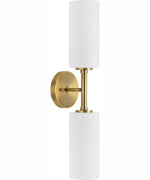
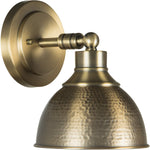
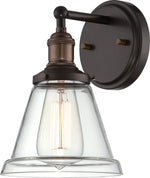
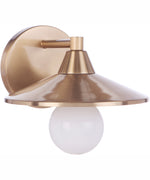
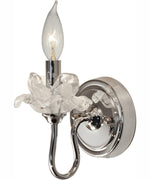
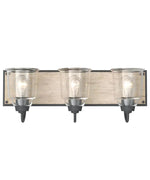
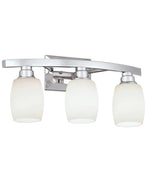
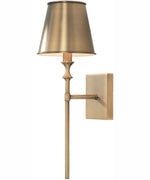
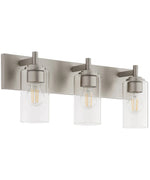
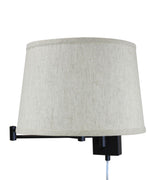
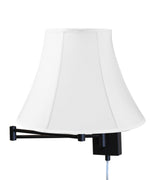
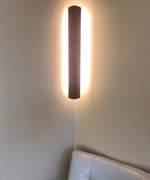
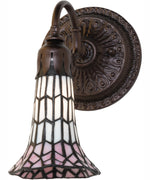
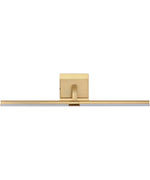
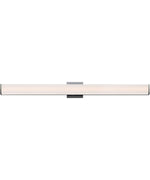
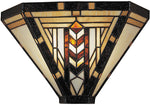
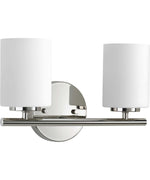
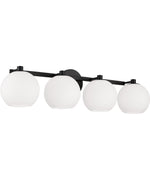
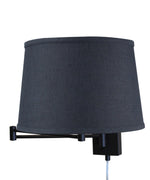
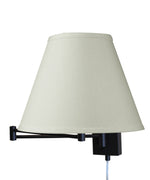
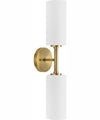
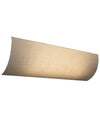
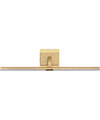
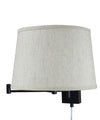
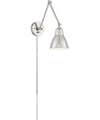
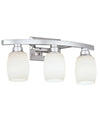
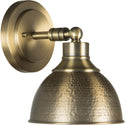
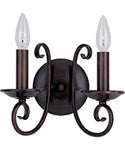
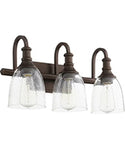
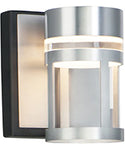
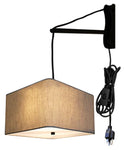
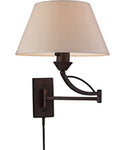
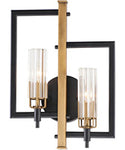
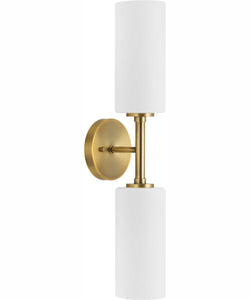
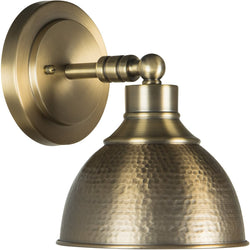


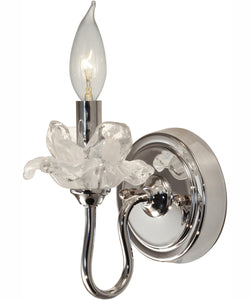
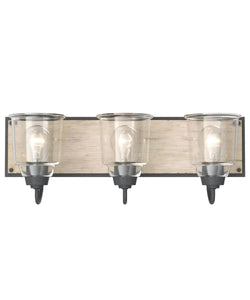
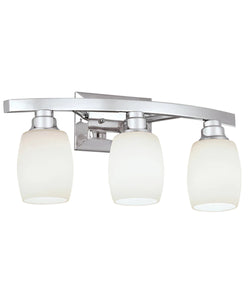
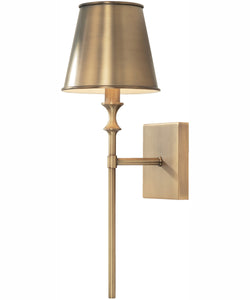
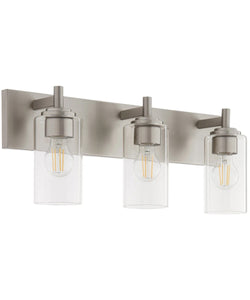
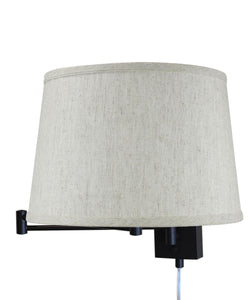
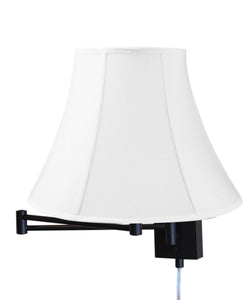

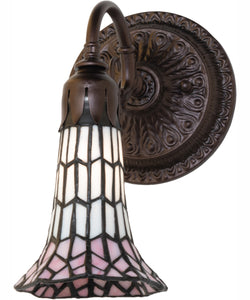
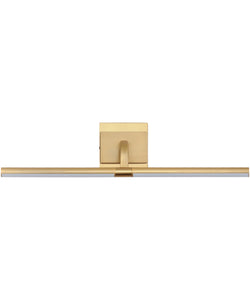
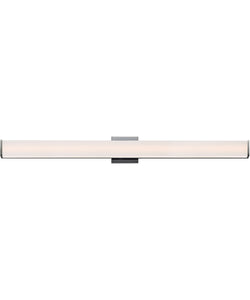
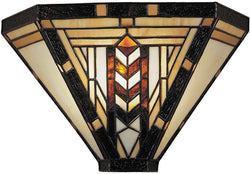
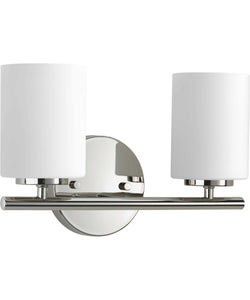
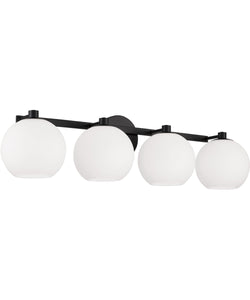
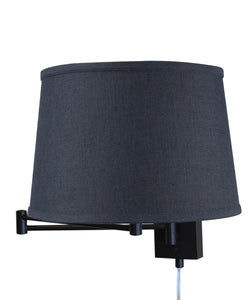
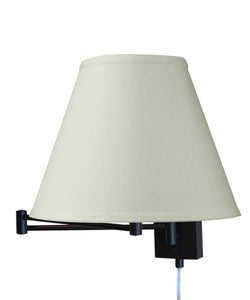
Comments